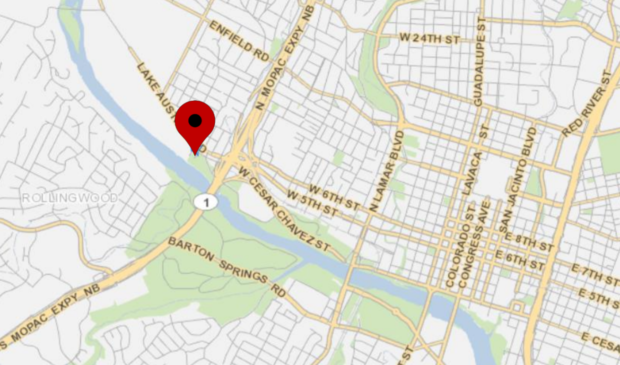Environmental Commission recommends increased impervious cover for Goodwill
Friday, August 21, 2020 by
Jessi Devenyns Goodwill of Central Texas is hoping to bring a new secondhand store and drop-off center to 2411 Lake Austin Blvd. In order to do so, the donation retailer will require a variance to allow it to build up to 89 percent impervious cover on a site where code caps the limit at 40 percent.
Candace Craig, from the engineering firm Dunaway, told the Environmental Commission at its Aug. 19 meeting that the project has been a collaborative effort between the nonprofit and the city for the last 15 months. This variance, she said, is the last step in the process. She emphasized that the project will not increase the amount of impervious cover on the site and may actually reduce it.
With a statement on the record confirming the nonprofit’s intention to reduce the on-site impervious cover and a plan to eliminate surface parking altogether, the commission recommended the approval of the variance request.
Goodwill’s newest proposed site is located in the waterfront overlay district for Lady Bird Lake and its nearby tributaries. The purpose of the overlay is to promote a “harmonious” transition between downtown development and the parkland that surrounds the water.
The current site plan for the Goodwill store that will replace a defunct service station shows 83 percent impervious cover. Craig said that while the variance will technically permit more impervious cover than what is shown in the plans, “we aren’t planning on increasing (from the plans) by more than 1 percent.” By asking to maintain the site’s current level of impervious cover, Craig explained that the project team can preempt any unforeseen circumstances that occur during construction, including the possibility of having heavy machinery occupy areas of the tract and block pervious groundcover.
Planning and Zoning staff supported the request. Renee Johns with the Development Services Department said on such a tight site, the applicant is encouraged to apply for a variance asking for above and beyond the planned need in order to avoid having to update the variance in the future. “There’s really not a whole lot of wiggle room with this site,” she said.
The corner site sits on 0.39 acres and was developed before Austin’s water quality and impervious cover regulations, making it eligible for developers to take advantage of the Redevelopment Exception. Under this rule, an applicant is allowed an exceptional departure from code to maintain existing impervious cover in return for providing additional water quality treatment on the site.
On this lot of land, Goodwill’s design provides the requisite 25 parking spaces with the use of a one-story underground parking structure and will additionally install water quality controls for the entire site that exceed what code mandates. Previously contaminated soil will also be removed from the site and the developers have already removed an underground storage tank that was used by the gas station.
Commissioners expressed their uncertainty about recommending a variance to allow a substantial jump in impervious cover permissions in a waterfront overlay area. They noted that not only is it environmentally unfriendly to have such a large amount of covered ground, but there is also the risk of setting a precedent for other developers to cite in future applications.
Environmental Officer Chris Herrington told commissioners that the Redevelopment Exception is a policy question that balances the trade-off between zoning limitations and water quality improvements. He said the question revolves around whether a site should remain in its current state because a developer cannot profitably develop a site with only 40 percent impervious cover, or does the city compromise and optimize for improved, code-compliant water quality treatment today.
According to Johns, this project is exceeding code-required water quality treatment.
Despite these assurances, Chair Linda Guerrero said, “That overlay is very significant. It was put there for a reason.”
Views on the project remained mixed on the dais. At the vote, the commission recommended the variance 7-1-1 with Commissioner Mary Ann Neely voting against the motion and Chair Guerrero abstaining. Commissioner Katie Coyne was off the dais.
The Austin Monitor’s work is made possible by donations from the community. Though our reporting covers donors from time to time, we are careful to keep business and editorial efforts separate while maintaining transparency. A complete list of donors is available here, and our code of ethics is explained here.
You're a community leader
And we’re honored you look to us for serious, in-depth news. You know a strong community needs local and dedicated watchdog reporting. We’re here for you and that won’t change. Now will you take the powerful next step and support our nonprofit news organization?







